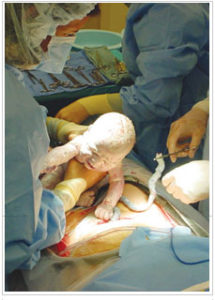Simon and I spoke to a great number of midwives (private and hospital midwives), local politicians and the lay public on the weekend at the “National Homebirth Conference” and it was so refreshing to join a group of people passionate about supporting safe birth practices.
Let me begin by saying – Homebirths are not for everyone and birthing in hospital is not ideal for all women. Research suggest however there are a percentage of low risk women who can safely deliver their babies at home.
It is important we respect the needs of all women.
That we respect women will make individual choices and hopefully decisions that honour their needs, be that a casearean or natural birth. All births involve an element of risk and women need to be confident with their preparation and their choices.

Simon and I have experienced a variety of different births, at birth centres, hospitals and home. We are very aware that hospitals play an integral role in critical care but we are also very aware that private midwives are extremely skilled and hold mother and baby “safety ” paramount. Research suggests that far too often hospitals interfere with births prematurely, which results in harm to mothers and babies (causing both short and long-term consequences). Unfortunately “unnecessary intervention” is not a topic readily conveyed to the public .
As chiropractors, we often see newborns who suffer significant trauma from birth. Evidence suggests hospital births are not safer for all babies, creating a powerful reason for the Australian government to embrace a model that is not so heavily influenced by the needs of the professionals who make considerable amounts of money, modernising birth.
I do not advocate one particular type of birthing because as women we have different needs and different birthing references. I am not anti-intervention. Births are unpredictable. I do believe however, that with sufficient pre-birth planning, almost all births can be made ‘sacred’. Be that a caesarean or natural delivery. I DO advocate that pregnant couples plan ahead for the myriad of birth outcomes that can unfold and they discuss and ‘plan’ for each of these scenarios with their carers. Ideally, decisions should not be made solely based on ‘expert opinions’, without individual investigation and scrutiny. There are many resources available to parents to improve their health literacy about the “buffet” of birthing options available to them.
There is also now a building body of “birth trauma” research that begs more parents to play an active role in guiding their birth outcomes irrespective of which environment they choose to welcome their newborn.
No couple wants to risk the life of either mother or child. It is unfortunate though, that couples who question the safety of hospital protocols are portrayed as ‘callous naturalists’ or ‘ignorant hippies’. It is also unfortunate that homebirths are portrayed as being extremely dangerous for all women whilst hospital births are promoted as being at the pinnacle of safety.
Homebirths are not for everyone and birthing in hospital is not ideal for all women. Research suggests there are a percentage of low risk women who can safely deliver their babies at home.
It is important we respect the needs of all women.
Firstly, let us look and see how costs to government for ‘modernised birth’ have grown in the last ten years.
In the years 1998 – 2008 Medicare Australia statistics show spending as1:
Labour and Delivery expenditure having grown from $22.5 million per annum to $46.4 million,
Post-natal expenditure grown from 0.16 million to o.3 million
Pregnancy Specific Diagnostic Services grown from $1.9 million to $13.6 million
Does this current birthing system support women or the professions who earn from these services?
Just because we have machines that go “beep” and we live in a country that is geographically diverse, does this mean we should we do away with natural childbirth for all women? NO…. if we were to restructure the current birthing model and put women’s needs above the hip pocket of the professional groups that encourage ‘modern births’ for all women, then research indicates we would be better able to cater for the safety of all women. YES that’s right, a new birthing model (formulated collaboratively by professional bodies) that helps identify “high” risk and “low” risk women based on health status and upon their geographical position.
It would seem that our current birthing system needs a major overhaul and through this process we could deliver a model that accurately represents and acknowledges the needs of all Australian women. Can Australia adopt ‘in-part’, as none are fool proof, a foreign model? Or perhaps we could navigate a new world- leading birthing model, one that collaborates the skill of midwives, allied health providers and obstetricians from prenatal care to early childhood. As every woman requires individual care – imagine if we had a strategy for pre and post natal care nationally, that helped guide and support women on the safest birth practice for her baby’s pending arrival. A model that ensures “best practice” and “short and long-term health safety” for mothers and babies.
References



